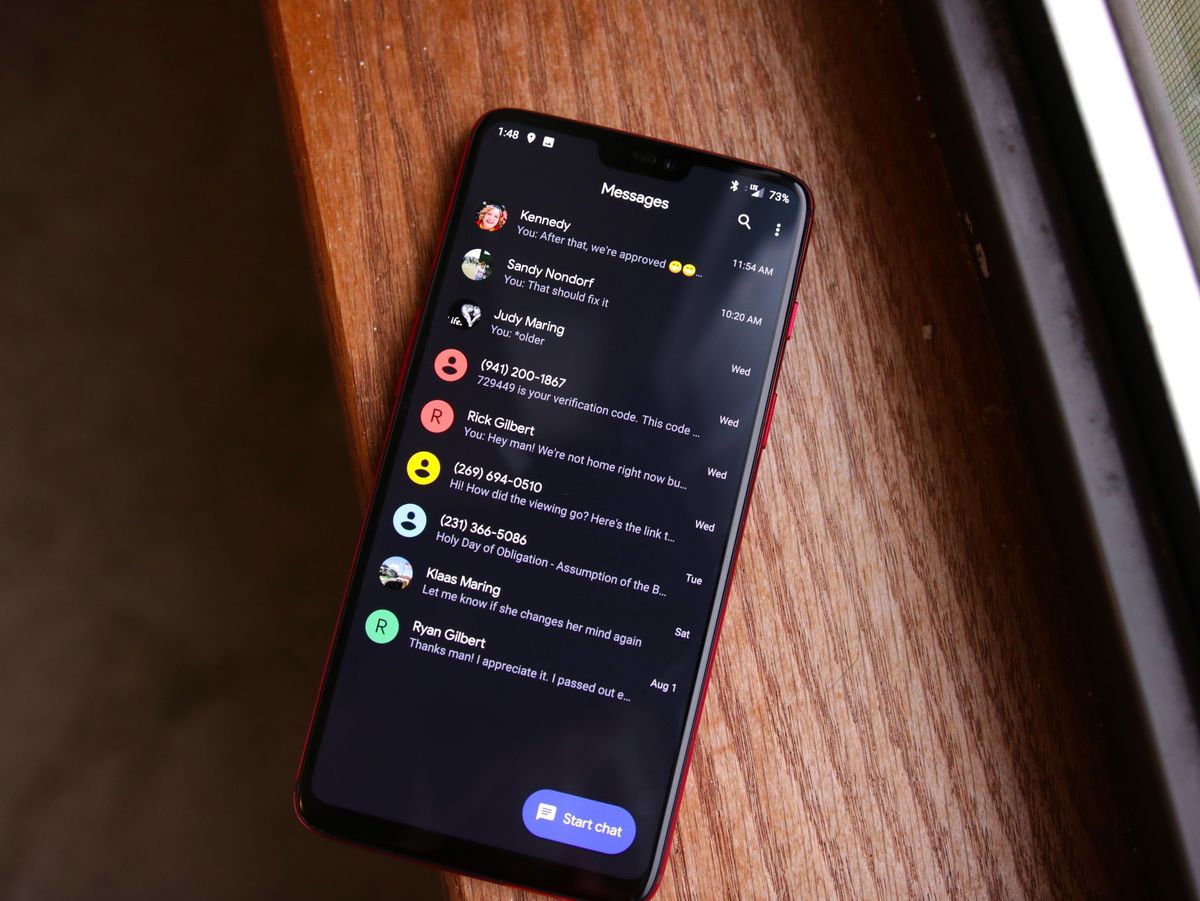
History of Android Messages
Early Days
Android Messages, initially known as Google Messages, has been the default messaging app on Android devices since 2013. It started with basic SMS and MMS functionality, allowing users to send text messages and share photos and videos. However, it lacked many advanced features found in modern messaging apps.
Evolution
Over the years, Android Messages has seen significant transformations. One notable update was the introduction of Rich Communication Services (RCS). RCS enhances traditional SMS and MMS by adding features like high-resolution media sharing, read receipts, and typing indicators. This aimed to bridge the gap between SMS and more advanced messaging services like iMessage and WhatsApp.
Features of Android Messages
RCS Support
Android Messages supports RCS, providing advanced features such as high-resolution media sharing, read receipts, and typing indicators. These features make the messaging experience more interactive and seamless.
Cross-Platform Compatibility
One significant advantage of Android Messages is its cross-platform compatibility. While RCS is primarily used on Android devices, it also works with iOS devices that have adopted RCS in iOS 18. This ensures a more unified messaging experience across different platforms.
Group Chats
Group chats are essential in any modern messaging app. Android Messages allows users to create and manage group chats easily. Users can add multiple contacts to a single conversation and share files, photos, and videos seamlessly.
File Sharing
Android Messages supports file sharing, allowing users to send and receive files of various sizes. This feature is particularly useful for sharing documents, photos, and videos with friends and family.
Read Receipts and Typing Indicators
Read receipts and typing indicators provide real-time feedback during a conversation. These features help users understand whether their messages have been read or if the recipient is typing a response.
End-to-End Encryption
While RCS does not offer end-to-end encryption by default, Android Messages provides an option for users to enable end-to-end encryption for their conversations. This ensures that messages remain private and secure.
Integration with Google Services
Android Messages integrates well with other Google services like Google Drive and Google Photos. Users can easily share files from these services directly within the app.
Customization Options
One of the strengths of Android Messages is its customization options. Users can personalize their chat bubbles, notification sounds, and even set up custom shortcuts for frequently used actions.
Tips for Successful Text Message Retrieval
Backup Regularly
Prevent data loss by backing up messages regularly. Use cloud services like Google Drive or other third-party apps to create automatic backups.
Use Recovery Software
If messages get deleted accidentally, use recovery software like Dr.Fone or EaseUS MobiSaver. These tools can scan the device's internal storage to locate and restore lost messages.
Preview Messages Before Recovery
Before recovering deleted messages, preview them to ensure only necessary data is retrieved. This helps avoid unnecessary data recovery.
Other Ways to Retrieve Lost Texts
Manual Backup
Manually back up messages by exporting them to a CSV file or another format. This method is useful when automatic backups fail or are not available.
Third-Party Apps
Several third-party apps offer advanced features for recovering deleted messages. These apps often provide user-friendly interfaces and support various file formats.
Pros and Cons of Recovering Deleted Android Texts
Pros
- Ease of Use: Many apps like Dr.Fone and DiskDigger offer user-friendly interfaces.
- Variety of Tools: Multiple apps and software options exist for recovery.
- Compatibility: Works with most Android devices.
- Cost-Effective: Many tools offer free versions or trials.
Cons
- Success Rate: Not all messages can be recovered, especially if overwritten.
- Privacy Concerns: Some apps may require access to personal data.
- Time-Consuming: Recovery processes can take a while.
- Technical Knowledge: Some tools need a bit of tech know-how.
iOS Alternatives
iCloud and iTunes Backups
iCloud and iTunes backups simplify the recovery process by providing automatic backups of messages. Users can easily restore their messages from these backups using built-in tools provided by Apple.
Built-In Tools
Apple provides built-in solutions for recovering deleted messages without the need for third-party apps. This approach ensures higher security and reliability compared to third-party tools.
Security
Apple’s ecosystem is generally more secure due to its strict privacy policies and end-to-end encryption features.
Success Rate
The success rate for recovering deleted messages on iOS devices is higher if regular backups are made using iCloud or iTunes.
Windows Phone Alternatives
OneDrive Backups
OneDrive backups integrate seamlessly with Microsoft services, making it easy to recover lost messages. Users can restore their messages from OneDrive backups using built-in tools provided by Microsoft.
Integration
OneDrive offers seamless integration with other Microsoft services, making it a reliable option for backing up and recovering data.
Security
Windows Phone devices have strong security features that protect user data, ensuring that backups are secure and reliable.
Success Rate
The reliability of recovering deleted messages on Windows Phone devices depends on regular OneDrive backups being current.
Comparing Alternatives
iMessage
iMessage offers seamless integration with other Apple devices, end-to-end encryption, and a rich messaging experience. However, it lacks compatibility with Android devices.
RCS (Android)
RCS provides similar features like read receipts, typing indicators, and high-quality media sharing. Unlike iMessage, RCS works across different Android phones but doesn't offer end-to-end encryption by default.
WhatsApp and Signal
WhatsApp and Signal both offer cross-platform messaging with end-to-end encryption. WhatsApp has a larger user base while Signal focuses more on privacy.
Future of Cross-Platform Messaging
The future of cross-platform messaging looks promising with Apple's adoption of RCS in iOS 18. This move could lead to a more unified messaging experience across different platforms and devices. As more companies get on board with RCS standards, interoperability issues may reduce while security enhancements become more prevalent. The potential for new features and improvements is vast, hence we can look forward to even more seamless and secure messaging experiences in the future.
